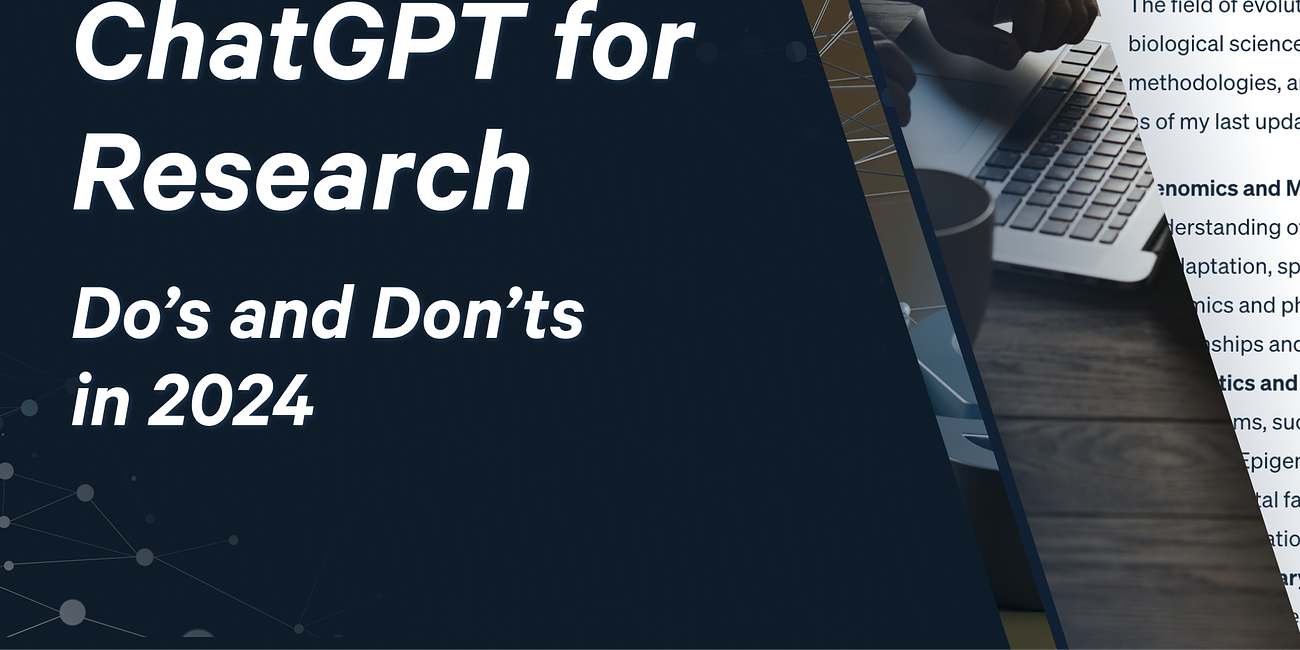ChatGPT for Research, The Do’s and Don’ts
A lot of researchers have been trying to integrate ChatGPT into their workflows... with mixed results! This week we go over how you can make the most of this tool, and avoid some dangerous pitfalls.
Adopting new tools to enhance your research workflow saves time and enables better, faster research to get done. ChatGPT has received a lot of attention for this very reason. But, it also has limitations. We’ve broken down the Do’s and Don’ts of using ChatGPT for research based on its current functionality, as well as listed some useful resources to look into.
It turns out one of the biggest issues with ChatGPT is that it can’t yet pull reliable sources. As a quick reminder, if you need to research references the old-fashioned way (“old-fashioned”!), check out Seed Maps – we’ve written a new guide for them here.
ChatGPT
ChatGPT is revolutionizing the way academic research is being done. And institutions are still scrambling to react. From papers being published with ChatGPT being list as co-author to large-scale publication venues like Elsevier taking a definitive stance, we’re still early in the adaptation process. Although it’s yet unclear how academia will handle AI-assisted research, the use cases for these tools have become clearer in the past few months.
Although the rules for AI tools in research are still in flux, some venues already have guidelines. Check the venue you plan on submitting to to see if they have any guidelines in place. For example, Elsevier states AI tools should only be used as an assistance. The author retains all responsibility and ownership. ChatGPT shouldn’t be listed as an author, but authors do need to declare they used AI in the writing process.
Do use ChatGPT to:
Summarize existing papers. Use handy tricks like “Give me 5 bullet points with a 300 word maximum” to get swift responses.
Create a paper outline
Rephrase and fix grammar. Plus, you can ask for explanations.
Write code
Don’t use ChatGPT to:
To find references or papers. ChatGPT is notorious for making up references, including author names, titles, and years of publication. You can even accuse it of doing so, and it happily fesses up.
Learn new information. Use summaries as guidelines or pointers to prioritize. Not checking ChatGPT’s responses means potentially trusting its hallucinations.
Write your finished text for you.
Math, maybe. This was a more serious issue at the launch of ChatGPT, but has potentially since been resolved with recent updates.
Join the discussion with your thoughts on ChatGPT in academia by Tweeting at us: @LitmapsApp.
Resources
ArxivGPT Summarizes arXiv papers with ChatGPT
Join the waitlist to build plug-ins for ChatGPT (March 23)
Evolution not revolution: why GPT-4 is notable, but not groundbreaking (March 16)
GPT-4 Is Exciting and Scary (March 15)
Chatting and cheating: Ensuring academic integrity in the era of ChatGPT (March 13)
Using ChatGPT for Assignments | Tips & Examples (March 2)
Can artificial intelligence help for scientific writing?
ChatGPT Update: Improved Math Capabilities (January 31)
Don’t Ban ChatGPT in Schools. Teach With It. (January 12)






